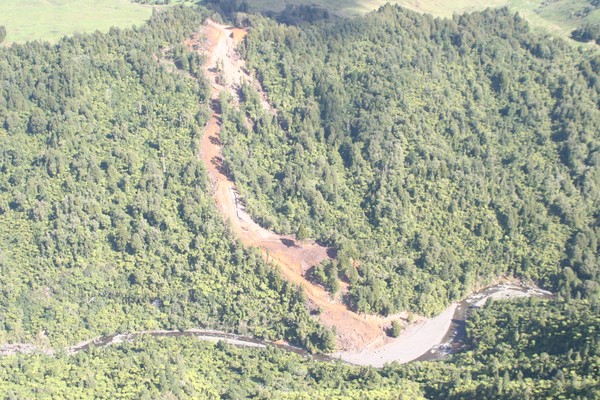Hydro developer hit with big fine for ‘environmental vandalism’
Thursday 25 October 2007, 12:51PM
603 views

A total of more than $160,000 in fines and costs have been imposed on a company and a contractor developing a Waikato hydro power scheme in the upper Waipa River. The fines and costs resulted from a prosecution taken by Environment Waikato, for what council staff described as “flagrant environmental vandalism”.
Hydro Energy (Waipa) Ltd also faces a potential six-figure remediation cost relating to a massive rock spill which destroyed native bush and left large, unstable rocks poised above a popular fishing spot on the Waipa river, about 20 km south east of Te Kuiti.
In his sentencing notes from the Hamilton District Court case, environment Judge Jeff Smith said of the company’s unauthorised work: “In terms of the continuum of deliberate action, I must place this at the very highest level in the sense that it is premeditated, against direct instructions from the regional council…and that it took steps to achieve the work by disguising the actual position to its contractors and the regional council.”
In imposing fines of $86,500 and costs of $43,800 against Hydro Energy, Judge Smith said “There is nothing before this court which satisfies me that the company has any remorse in respect of its conduct.”
When the whole case was looked at in total, Judge Smith said “I am forced to the conclusion that these offences are at the most severe end of the deliberate spectrum this court has come across”.
Judge Smith was awaiting an expert’s report before deciding exactly what Hydro Energy would need to do to mitigate the effects of the rock spill.
A contractor who failed to question whether the correct consent had been obtained for the rock spill-related work was fined $25,000 and ordered to pay $5,000 costs, although the judge noted his remorse and cooperative attitude with authorities.
Environment Waikato’s complaints and enforcement manager Rob Dragten said the case highlighted how developers could not plough ahead contrary to resource consents, damage the environment in the process, and expect to get away with it.
“Hydro Energy’s blatant flouting of the terms of its resource consents has led to the destruction of a significant area of bush, and will cost a significant amount to put right. This case effectively involved flagrant environmental vandalism, and it is encouraging to see the court imposing very significant penalties,” said Mr Dragten.
“If you have a resource consent to do something, you must stick to its terms. You can’t just make up what you do as you go along, as Hydro Energy appears to have done in this case.
“Also, contractors have a responsibility to know what consent conditions and limitations apply to the project they are working on, and what the rules are in the Waikato Regional Plan regarding earthworks they carry out.”
In 2003, Hydro Energy gained consents from Environment Waikato and Waitomo District Council to construct a hydro electric power station on the upper Waipa River. It involved taking water from the river and then running it down hill through a power generator.
The huge scale of the non-compliance was brought to Environment Waikato’s attention last year by Fish & Game members fishing on the Waipa River. The company had led Environment Waikato to believe work had not yet commenced.
The company and the contractor ended up pleading guilty to nine and three charges respectively laid under the Resource Management Act by Environment Waikato, including failing to comply with Environment Waikato instructions to stop unauthorized activity.
Judge Smith noted that Hydro Energy and the contractor failed to ensure - as the consents specified - they had council sign-off for various works before proceeding.
It had been agreed a five-metre wide strip of bush would be cleared so that the pipe to carry water downhill to the power generator could be put in place, with a total area of 2500 sq m to be cleared.
The strip ended up having a general width of 20 metres, and was up to 58 metres wide, with 32,000 sq m of vegetation being cleared. Also, a large amount of soil, debris and rock ended up being dumped into native bush beside the strip. “The effect of this rock spill on the vegetation and hillside was dramatic…it knocked over most of the indigenous vegetation in the immediate vicinity and the spill extends several hundred metres into the bush and valley below,” Judge Smith said. He warned there was clear potential for further rock slides from the slope into the river.
Since late last year, the project has taken on a new joint venture partner and the council has told the judge it now has a much higher degree of confidence consents will be complied with.
“The council is now working closely with the project to ensure it proceeds properly. We also look forward to working with developers to ensure the correct measures are taken to stabilize the loose material in the area of the rock spill and to help the bush regenerate,” said Mr Dragten.